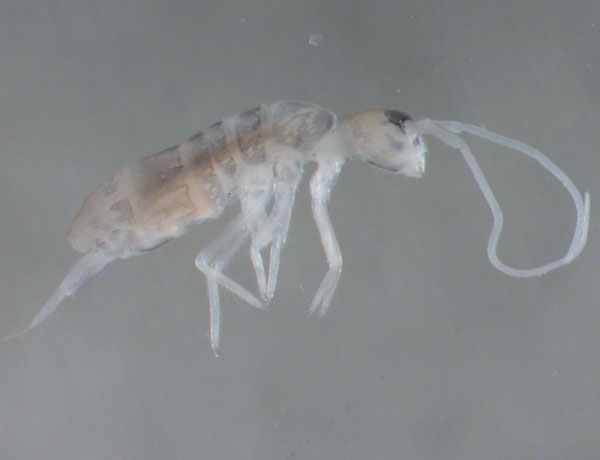Detecting insects that live the deepest in the ground
A group of Portuguese and Spanish scientists has announced the discovery of the deepest insect species in the ground, about 1,980m in the deepest cave in the world Krubera-Voronja (2,191m) in the east of the sea. Black.
According to British science journal New Scientist, it is the Plutomurus ortobalaganensis jumping beetle of arthropod family, surviving at the same depth thanks to eating fungi and decaying organic materials under the cave. .

Plutomurus ortobalaganensis - (Photo: New Scientist)
Three other insects are also found under Krubera-Voronja Cave, Anurida stereoodorata, Deuteraphorura kruberaensis and Schaefferia profundissima . All 3 species are jumping beetles - a primitive wingless small insect - living completely in the dark and without eyes.
Scientists at the Spanish Museum of Natural History, in collaboration with the University of Aveiro, Portugal, explored the cave in 2010 and discovered the animals.
Prior to this discovery, scientists also found a number of other jumping beetles living at a depth of about 500m. Specifically, Ongulonychiurus colpus species at a depth of about 550m in Spanish caves or Tritomurus veles at a depth of about 430m in Croatian caves.
The findings show the extraordinary existence of jumping beetles in the extremely harsh shadow habitat of the cave.
- How does the 'hell well' deepest on the ground appear?
- Insects 'make phone calls' to each other through leaves
- More than 1 million species of insects on Earth but this is the reason they are
- The deepest hole in the Earth: digging for 24 consecutive years 12km, and more than 6300km to reach the center of the Earth
- Detecting scrap yard in the deepest place in the world
- Detecting the deepest cave in the world, not finding the bottom
- Detecting long tail bugs under the ground with cheese bait
- Here's how humans live on Mars: Growing vegetables in a cellar and ... chewing on live insects
- The 'monsters' of the ocean
- Eating live lobster ground is at risk of lung fluke infection
- Detecting bacteria that live on Mars
- Inside the explorer ship, the deepest part of the Earth
 Why do potatoes have eyes?
Why do potatoes have eyes? 'Tragedy' the world's largest carnivorous life: Death becomes ... public toilet
'Tragedy' the world's largest carnivorous life: Death becomes ... public toilet Tomatoes were once considered 'poisonous' for 200 years
Tomatoes were once considered 'poisonous' for 200 years Detecting microscopic parasites on human face
Detecting microscopic parasites on human face